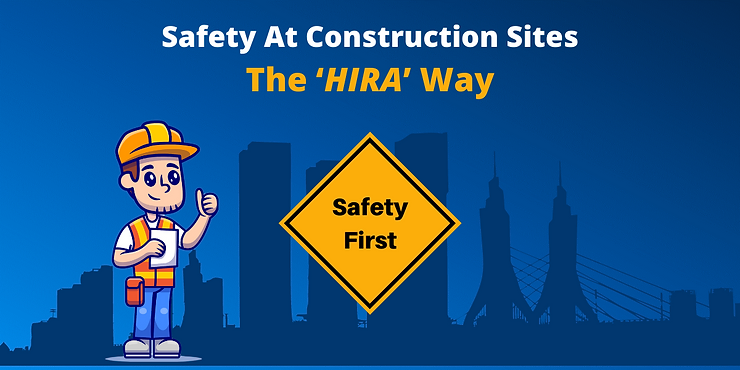
Acquiring control on variables at workspace is the first step towards achieving a semblance of orderliness in work. #Safety is the culmination of these efforts. A wholesome grip on the various activities in the #construction industry is paramount to this state of affairs.
Coming to grips is and can be attained with an eye on detail on what goes at a construction site. It calls for across the board access to data, information and an avenue for remedial action for rectification of errors and plugging loopholes in workflow. The absence of this is more often the root cause of the various mishaps that get reported from the construction industry.
Analysis of any major incident or accident at construction sites throws light on looseness in planning or a devil-may-care attitude towards possible calamities. The principle of “anything which can go wrong will go wrong” is applicable more in workplaces where the number of workforce is high and varied and the work is associated with dabbling in danger zones. Hazard Identification and Risk Assessment (#HIRA) is nowhere more vital than in construction industry which ranks among the top 5 accident-prone work zones across the world.
As they say, prevention is better than cure, identifying risks and eliminating hazards at workplace like a construction site assumes paramount importance for a safe work environment. A proactive approach towards hazard and risk defines the level of safety of stakeholders at work. HIRA is a continuous process, starting from workforce induction to project completion and all procedures of work in between. Adopting modern technology to gain an upper hand on possible accidents/near mishaps at construction sites is one of the sure shots to safety of workforce and equipment. SafetyApp offers a wholesome and 360 degree solution to the concept of workplace safety at construction sites.
RELEVANCE OF HIRA FOR CONSTRUCTION INDUSTRY
Any source of harm, damage or illness to the workers at construction sites or for that matter any workplace can be termed as Hazard. Identifying that source and coming up with solutions to successfully plug that source paves the way for a safe work environment. Obtaining insightful and actionable information from across the construction activities forms the backbone of getting a hold on hazards and overcoming them. In other words, a continuous flow of information enables the supervisors and or management to stem the hazards and provide a safe work environment. Manual monitoring procedures are less effective in controlling possible hazards.
While most hazards are evident several are border-case. A comprehensive and effective approach lies in identifying all the possible hazards (including the border-case) and assessing the possible risk they lead to. To be sure all hazards are factored for, ensure to
Analyze all works including non-routine tasks
Assess work environment including the machinery
Monitor the workflow- how the work is done
Have interactive sessions with the working people on the spot- they understand the risks and hazards better as they are the ones doing the work.
Look at injury/mishaps records for a pattern
The construction activity is a complex mix of people with various IQ levels working towards achieving the common goal of project completion. The industry has to get work done from the grossly illiterate to the academically accomplished workforce. HIRA allows for proper identification of talent, their placement at workplace, the provision of required training sessions for each level of capabilities, their monitoring and analysis of their output at all times. Elimination of square pegs in round holes goes a long way in avoiding mishaps and near misses. This objective can be better achieved with digital solutions like SafetyApp.
For a more comprehensive idea of how SafetyApp can insulate your construction site and the workforce from perils and hazards, call for a demo today.